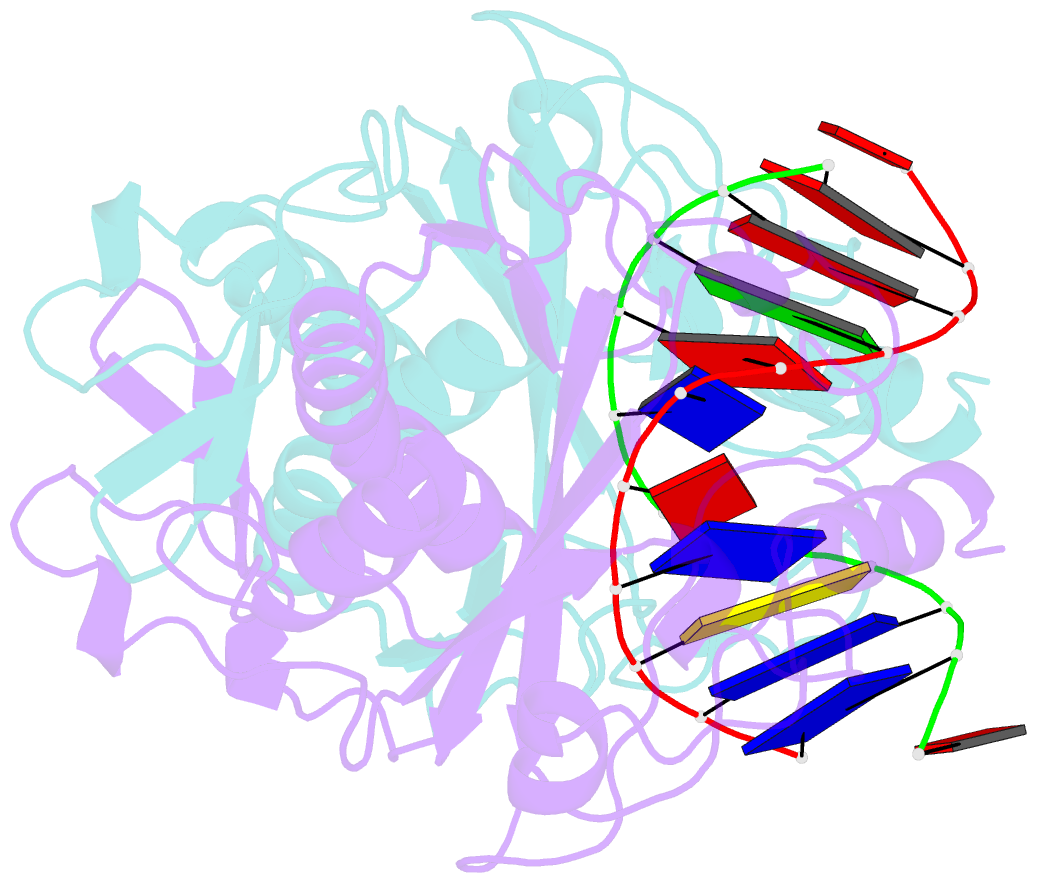Summary information and primary citation
- PDB-id
- 2ge5; SNAP-derived features in text and JSON formats;
DNAproDB
- Class
- hydrolase-DNA
- Method
- X-ray (2.4 Å)
- Summary
- Ecorv restriction endonuclease c-terminal deletion mutant-gatatc-ca2+
- Reference
- Hiller DA, Perona JJ (2006): "Positively Charged C-Terminal Subdomains of EcoRV Endonuclease: Contributions to DNA Binding, Bending, and Cleavage." Biochemistry, 45, 11453-11463. doi: 10.1021/bi0606400.
- Abstract
- The carboxy-terminal subdomains of the homodimeric EcoRV restriction endonuclease each bear a net charge of +4 and are positioned on the inner concave surface of the 50 degree DNA bend that is induced by the enzyme. A complete kinetic and structural analysis of a truncated EcoRV mutant lacking these domains was performed to assess the importance of this diffuse charge in facilitating DNA binding, bending, and cleavage. At the level of formation of an enzyme-DNA complex, the association rate for the dimeric mutant enzyme was sharply decreased by 10(3)-fold, while the equilibrium dissociation constant was weakened by nearly 10(6)-fold compared with that of wild-type EcoRV. Thus, the C-terminal subdomains strongly stabilize the enzyme-DNA ground-state complex in which the DNA is known to be bent. Further, the extent of DNA bending as observed by fluorescence resonance energy transfer was also significantly decreased. The crystal structure of the truncated enzyme bound to DNA and calcium ions at 2.4 A resolution reveals that the global fold is preserved and suggests that a divalent metal ion crucial to catalysis is destabilized in the active site. This may explain the 100-fold decrease in the rate of metal-dependent phosphoryl transfer observed for the mutant. These results show that diffuse positive charge associated with the C-terminal subdomains of EcoRV plays a key role in DNA association, bending, and cleavage.





